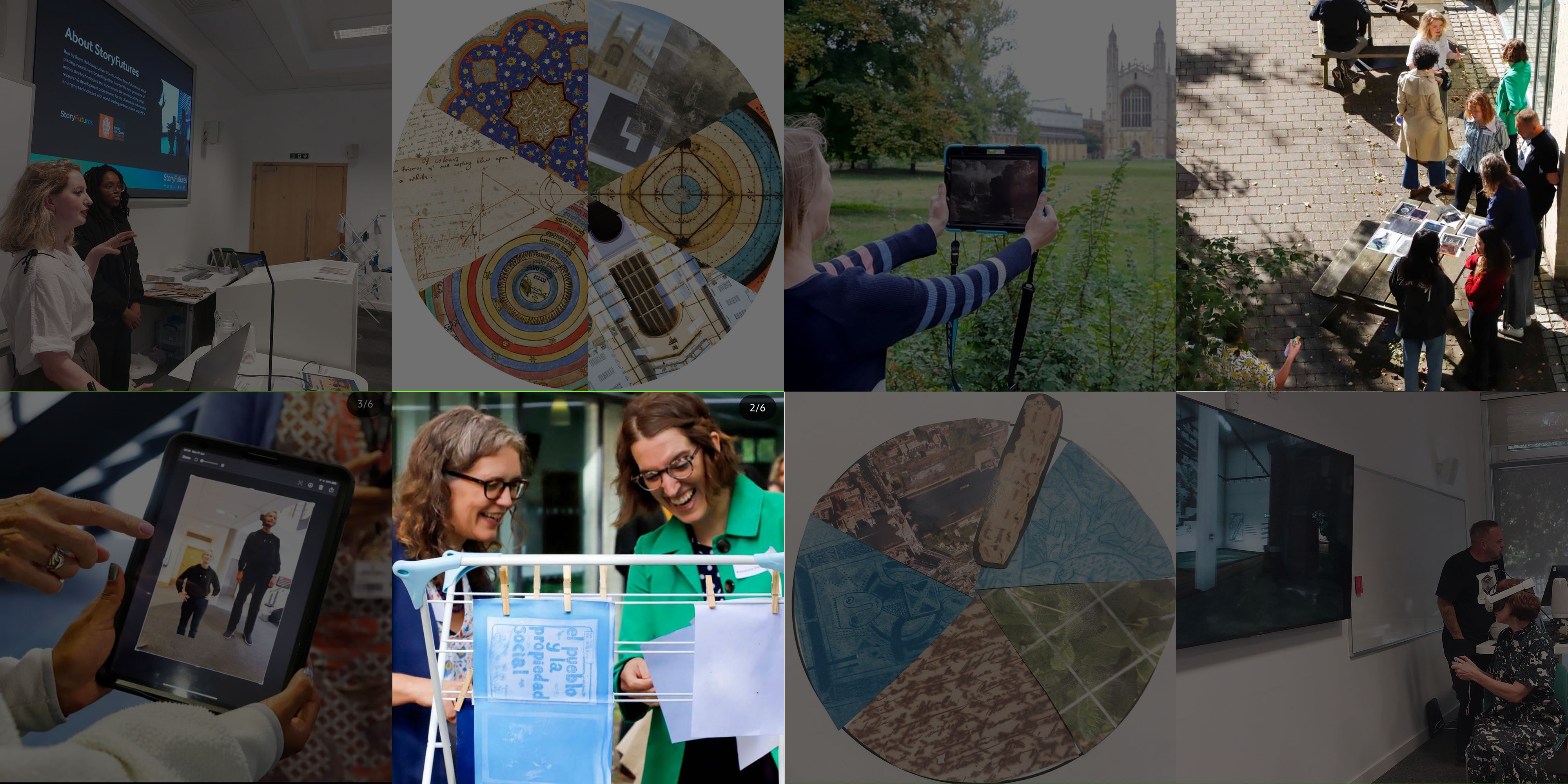EDC Symposium: Part Two
by Andy Corrigan
Acts of Creation
Activity 1: Casting Light on Digital Ghosts
The cyanotype is an early photographic process discovered by John Herschel in the 1840’s, and the term “blueprint” is derived from its past use a method of producing copies of architectural plans. It remains popular and is one of the simplest photographic technologies, in that once a medium is made light-sensitive it then only requires exposure and rinsing in water. It also has the benefit of being one of the safest chemical-based photographic methods and is non-toxic to people and the environment.
Before the event, I asked all of the speakers and panel chairs to take a look at Cambridge Digital Library and identify a digital object or two that they felt related to them personally or that might represent their work in some way. My intention was to then use these to undertake a creative activity which was imbued by a collective sense of personality of the event itself. This became more pertinent in a way because a couple of people ended up not being able to make it, but their presence, voice and contribution could still be present through this activity. After collating the chosen digital images, I converted them and printed them onto transparent acetate film sheets ready to use them as “negatives” form which participants at the symposium could create their own cyanotypes. All I needed to do then was keep my fingers crossed for some sun!
Armed with the pile of negatives, plenty of pre-treated cyanotype paper and cotton sheets, a couple of tubs of water and an old clothes airer, I asked all the attendees at the symposium to pick an image or two, tape them to a cyanotype sheet and to head outside. I recommended everyone to expose their cyanotypes in the sun for about fifteen minutes before rinsing and hanging to dry. It was all a bit chaotic, but I was amazed and encouraged by how everyone took to the activity, which also provided plenty of opportunities for people to start talking to each other and helping each other out. I’d only scheduled half an hour for the activity knowing that might be a tall order, but whilst it took just over an hour for everyone to make at least one print, my aim was that the activity would promote a sense of wonder, get our minds in gear, and encourage conversation, and it certainly seemed to achieve all of that.
You can explore a photo storyboard of the activity in more detail using this IIIF viewer:
Acts of Creation - Panel Session
So it was with an excited buzz that the initial panel session brought together different perspectives and approaches to acts of creation. These ranged from ideas of information creation through creativity, the creation of spaces and events inspired by books, and the role of rich data models in manuscript catalogues.
Vicky Grant, from the University of Sheffield, introduced the ‘Creative Library Project’, on which the University Library there is working with the Students’ Union Liberation Officers. Together they have been developing their Digital Commons space with creative workshops in the library context through the lens of liberation. Vicky questioned the epistemologies of cooperative inquiry, wondering if libraries can transcend the traditional concept of propositional knowledge, and can in-turn liberate the library itself – its space, its collections, its staff … its very idea. One way to make this liberation sustainable is to ensure library staff are involved and invested in that journey. Vicky is also part of the same cohort of AHRC-RLUK Professional Practice Fellows as me, so it has been incredibly useful and inspiring to be able to share insights and explore commonalities.
At Vrije Universiteit Amsterdam they have been exploring creative ways to give life back to their print collections. Anouk Nuijten shared some “S(h)elf reflections” on the ‘Re:Book/Omboeken’ project there, to which there are three themed pillars:
- Books as inspiration
- Books as initiators of social activities
- Books as objects
Outcomes have included tangible spaces and creations as well as some less so physical, and a lasting legacy is their new ‘Library Lounge’ space for interdisciplinary connections. Anouk’s positive approach to the challenges of this undertaking demonstrates the value in its outcomes, and by creating some very “human” interactions – which is what books are designed for after all? – the potential of playfulness can perhaps inject dynamism, and sometimes joy, into something that had perhaps become overly static, and in doing so build a-fresh a capacity to inspire.
Closer to home, Yasmin Faghihi, Curator of Near Middle Eastern Collections here at CUL, has been using TEI XML to create manuscript catalogue data, and she also teaches this practice. Yasmin has also been applying computational methods to generate new knowledge, looking at ‘Manuscript Catalogues as Data for Research’. The process of creating this catalogue data facilitates the description of intellectual content, and an ability to situate it, as well as to describe the physical object itself. The process highlights the importance of decision making and how, as curators who create, we think about the role that our experience has on the information we create, and in turn how that might be used. Another important factor, in this digital age, is how a non-hierarchical nature creates space for, and facilitates, connections to be made across collections and cultures. Yasmin’s practice embodies how TEI conflates the bibliographic standards of libraries with the Digital Humanities methods that are needed to incorporate them into a complex digital world.
You can explore the cyanotypes created by the attendees during the activity in more detail using this IIIF viewer:
This post has been funded by the AHRC-RLUK Professional Practice Fellowship Scheme for research and academic libraries.
